At the Calouste Gulbenkian Foundation, the possibility arose to put Jorge Queiroz and Arshile Gorky‘s oeuvres into dialogue. In a special setting, the exhibition presents drawings and paintings by both, which encompass expressionism, surrealism, abstraction and symbolism. But what fuelled the association between two artists from different generations and cultures?
The generational gap implies a journey through time, between the past and the present (or vice versa). We walk through the show looking for similarities and dissonances between the two. Gorky (Khorkom, Armenia, c. 1904 – Sherman, Connecticut, 1948) was the last of the surrealists and the first to take steps into abstract expressionism. Queiroz (Lisbon, 1966) is one of the most successful contemporary artists in Portugal, exhibiting actively since 1989. His work is in various public and private collections. The introductory text revealed the curator Ana Vasconcelos’ desire to create a dialogue between the two artists. Jorge Queiroz was invited to engage with Arshile Gorky’s work, taking an active role in the development of the exhibition, participating in the selection of Gorky’s drawings and paintings, as well as the set design.
The experience starts at the first step in to go to, where we feel something different underfoot, as he entire floor of the exhibition is yellow and spongy. In the exhibition hall, the drawings and paintings have been displayed on all the walls. In the centre, we see a void that underlines the space and architecture of the building. This void has been made for the viewer, who adds the trail of their footsteps throughout the exhibition. Forty works are presented, fifteen by Arshile Gorky and the others by Jorge Queiroz, except for a small bust in wood by an unknown author (at the beginning of the exhibition). The drawings and paintings create a circuit. Exhibited interchangeably, the chronologies of Queiroz and Gorky overlap and create a common thread.
From Gorky, we see mostly drawings made with graphite, coloured pencil or wax, where fine, black lines and quick, agile strokes predominate. We only see three paintings: the first is from 1944, entitled Garden of Wish Fulfilment. Then, Ante-Medusa from 1944. Lastly, Last Painting (The Black Monk) from 1948. In Garden of Wish Fulfilment, Gorky transfers the energy of drawing to the oil canvas, balancing the composition with fine lines and blacks, as well as coloured spots (black, red and yellow). This is a painting where the forms are set against a textured background with a faded colour. Ante-Medusa stands out for its salmon-pink colour (absent in any other work in to go to), but above all for its thick brush stroke. Here, the fine lines disappear, and the blotches flood the canvas surface, increasing the scale of the painted elements. Last Painting (The Black Monk) is at the end of the exhibition (which is also the beginning). It is thought to have been Gorky’s last work, as it was found still on the easel after the artist’s suicide in July 1948, when he was 44. The black of the canvas is tragic and the brushstrokes feature the same style as Ante-Medusa: they are broad strokes and spots, which outline the canvas background, creating biomorphic figures. We can also see swift notes of red, green and yellow. It is a gestural and aggressive painting, with a confused and emotional interpretation, the antithesis of the fine and delicate line drawings that Gorky had created until then. In these last two paintings, Gorky comes very close to abstract expressionism and to his contemporaries Willem de Kooning or Pollock.
In his childhood, Gorky experienced the genocide of the Armenian people, living as a refugee alongside his mother and three sisters. He eventually lost his mother early in 1919, a consequence of malnutrition. He went to the United States a year later; these were traumatic events that shaped him psychologically and artistically. In the United States, he met the surrealists André Breton and Roberto Matta, who contributed to the maturation of his style, entering into psychic automatism: a way of separating the stroke of the drawing from the limitations and wills of consciousness. Gorky’s works in to go to are from the 1940s, considered the phase of his artistic maturation.
Jorge Queiroz began his career by drawing, working heavily on paper; he slowly began to introduce colour through layers of paint. This made him change his work surface, adopting the canvas. In to go to, most of Queiroz’s works are paintings from 2010 to the present day. With intense overlaps of paint and colour, Queiroz works between abstraction and figuration, seeming to follow psychic automatism. The brushwork is hectic but rigorous. The compositions have several layers and depths, the figures boast different scales. It is a magical and dreamy atmosphere. Sometimes the titles add symbolism to the images, like the work Na clareira os teus olhos (2020) or Sopro quente e calafrio (2020). The words illuminate the path leading us to the painting. Queiroz frequently uses the colour yellow, something essential for the outlines and stains that emphasize the drawn elements. The black of the gallery walls intensifies the painting’s yellow. The floor is almost a coloured magnet that guides our eyes towards the movement of the canvases.
The few drawings he presents here show us another, perhaps darker, side of Queiroz. The two drawings Sem Título, from 1999 and 2000 (exhibited side by side), made in pencil and graphite, show silhouettes of small figures with a body but no face. These characters are hybrid and intense. They float on the paper between shadows, in an atmosphere resembling the dreamy and surreal. The spots have multiple scratches, the drawing is anxious and reminiscent of a ghostly atmosphere. These are the works closest to Arshile Gorky.
Jorge Queiroz and Arshile Gorky employ a personal abstract language, featuring hints to concrete and real elements, which move on the canvas between the harmony and intensity of colour. Despite being from different generations and cultures, they end up united in to go to through the essence of psychic automatism, in an intimate and surreal environment, accentuated by the venue’s dramatic set design.
To go to is at the Calouste Gulbenkian Foundation until October 17, 2022.
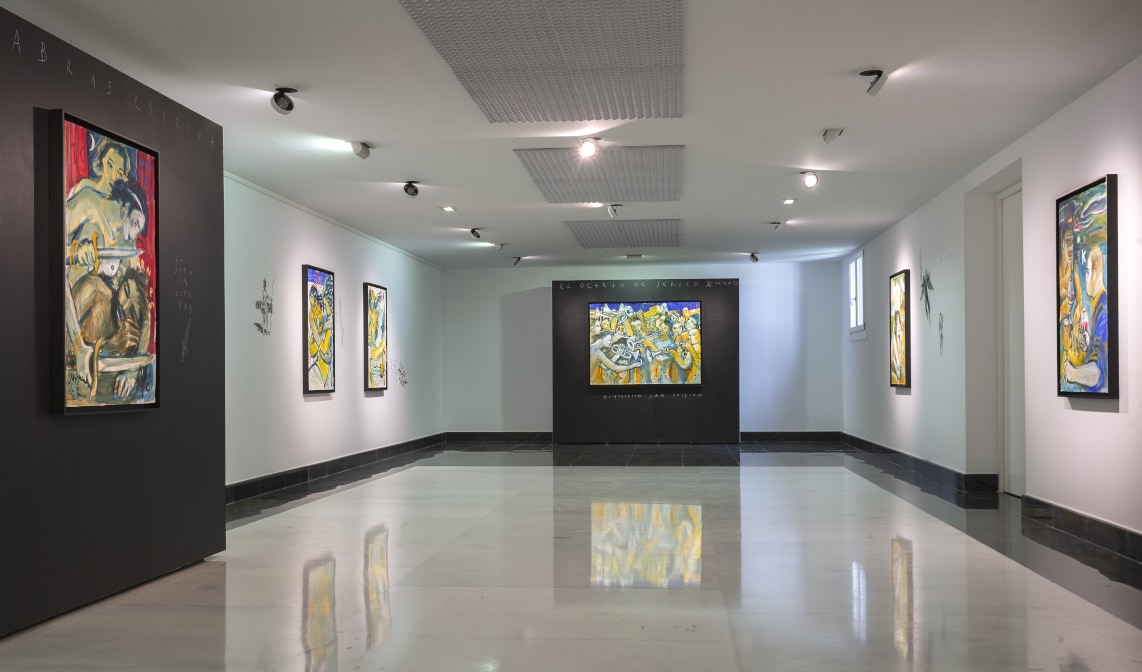
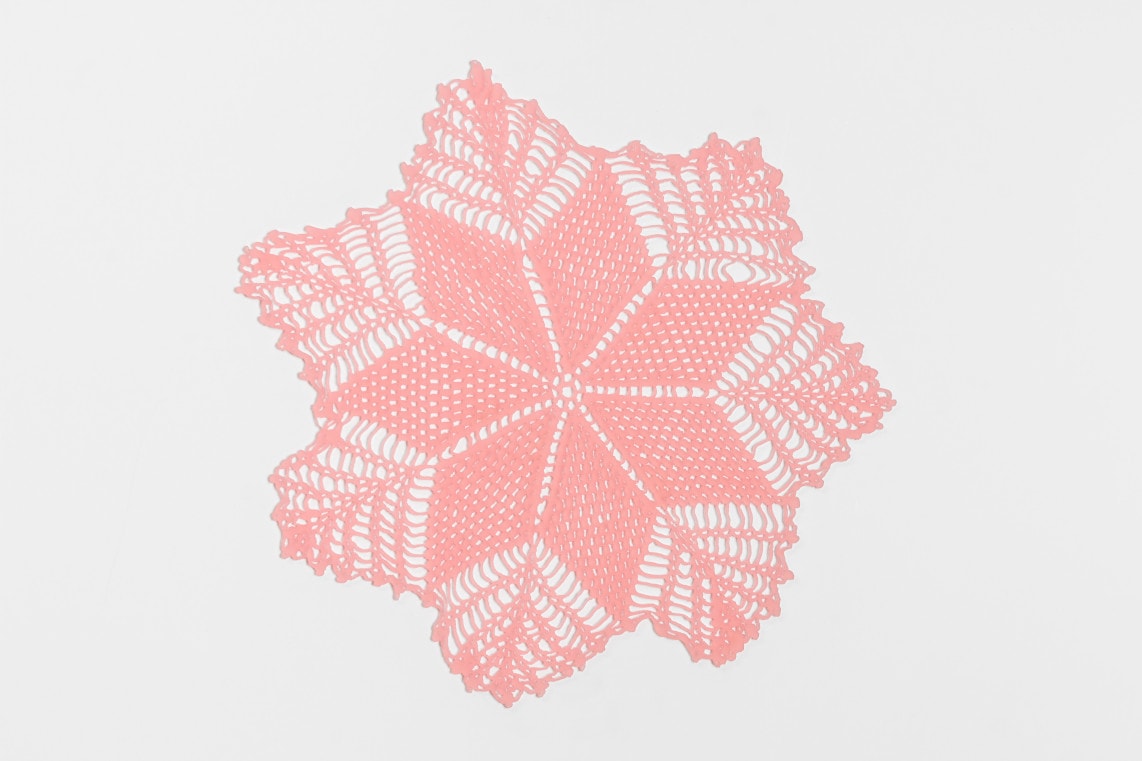
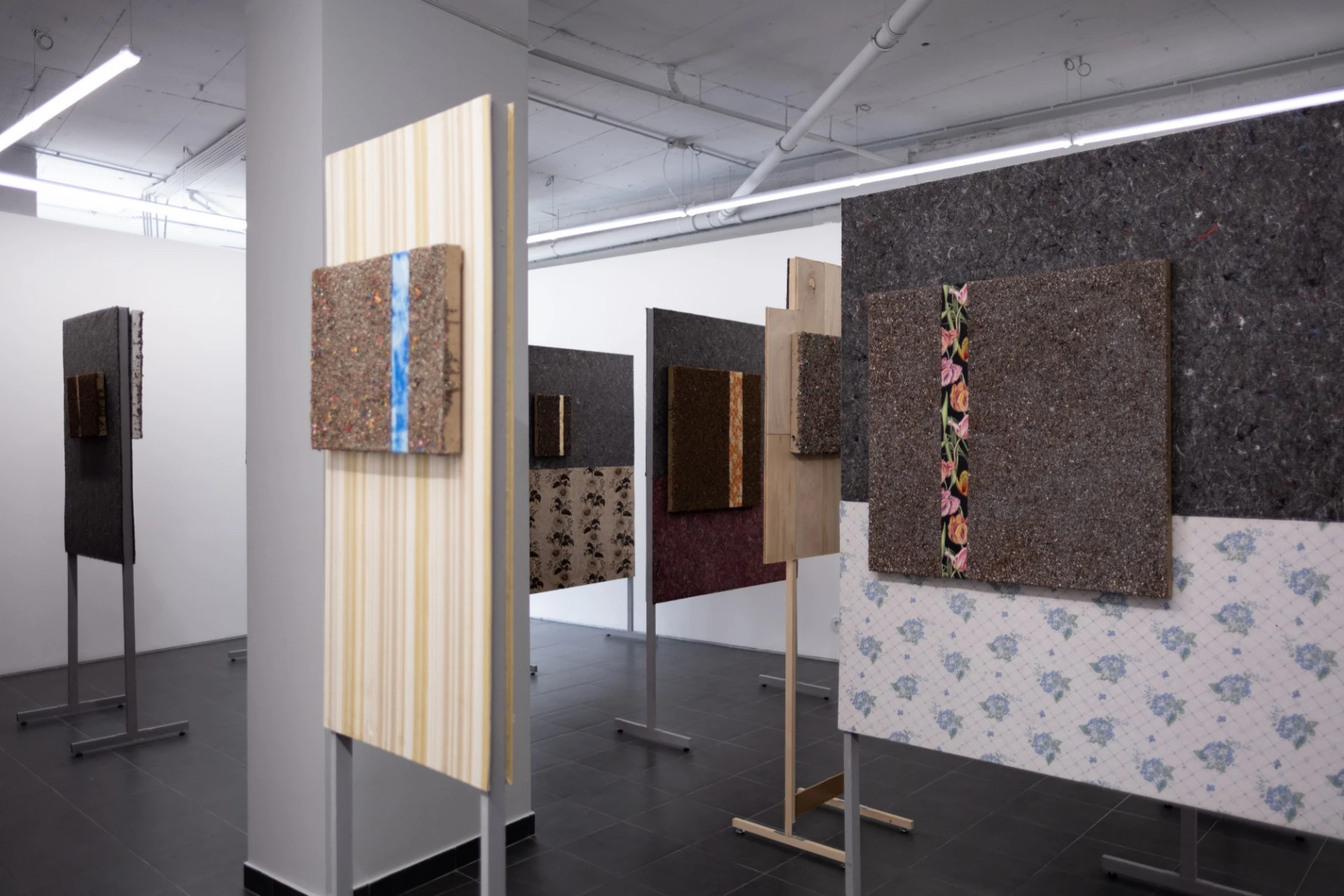
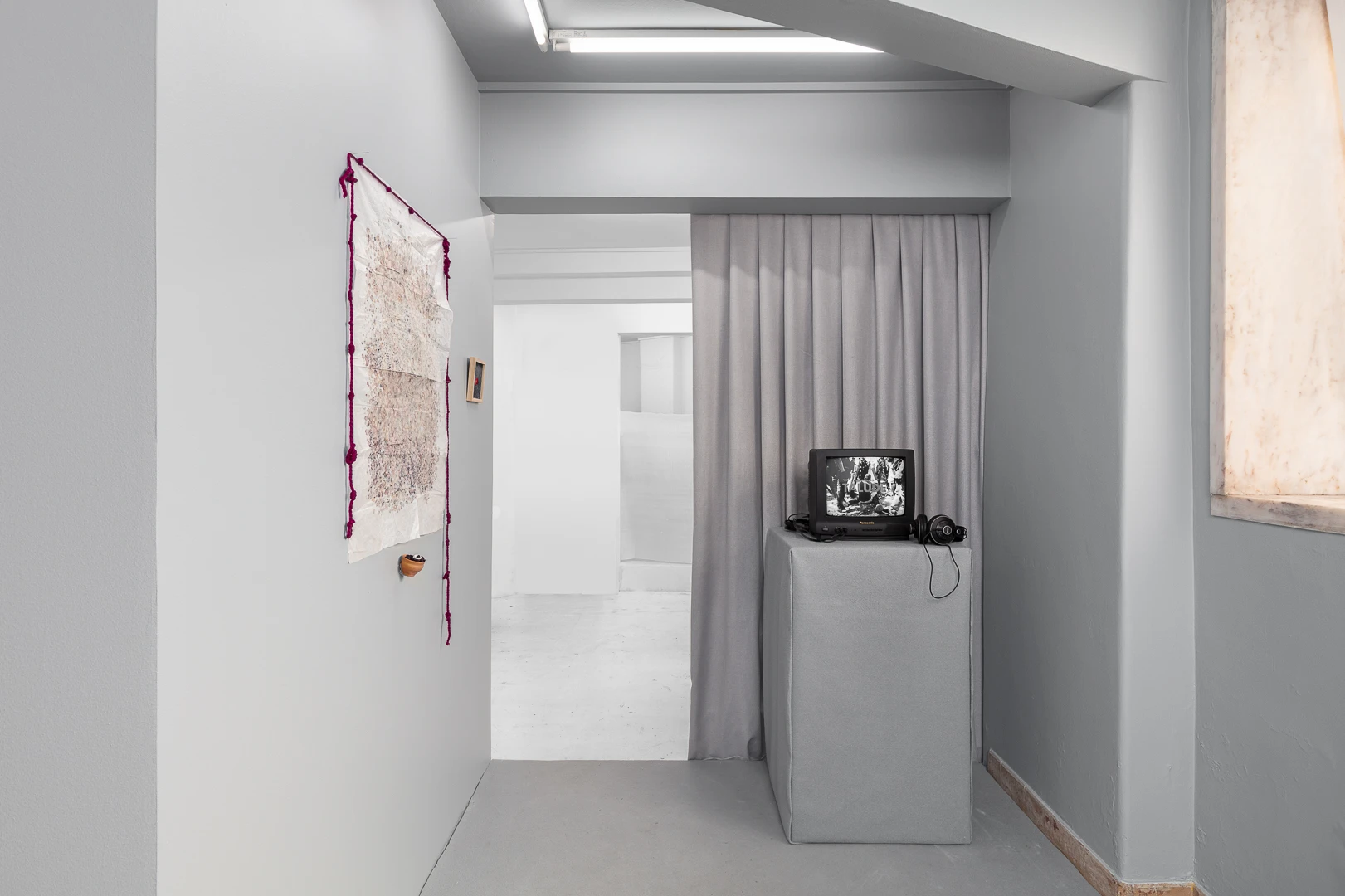
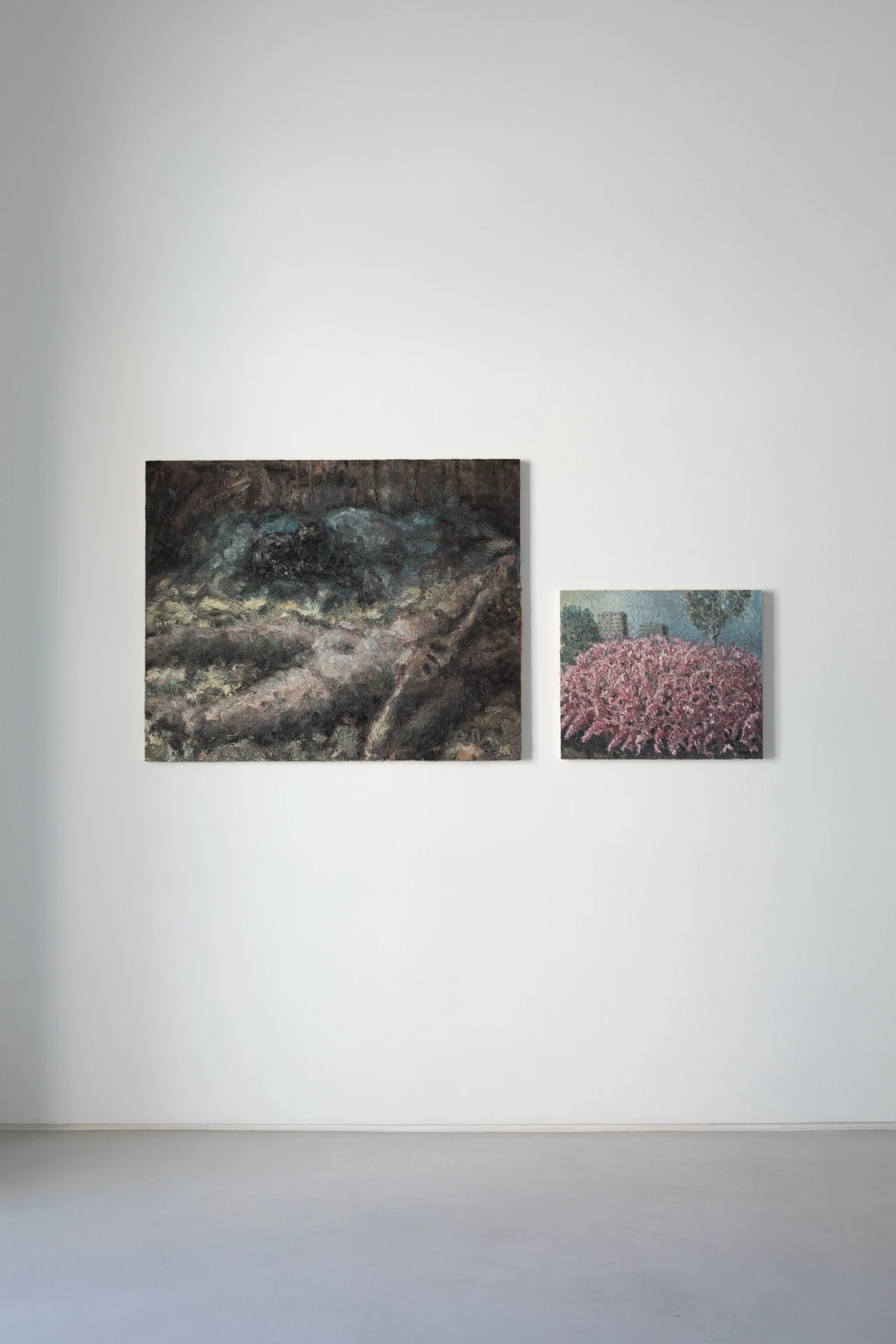
-nwaos.jpg)